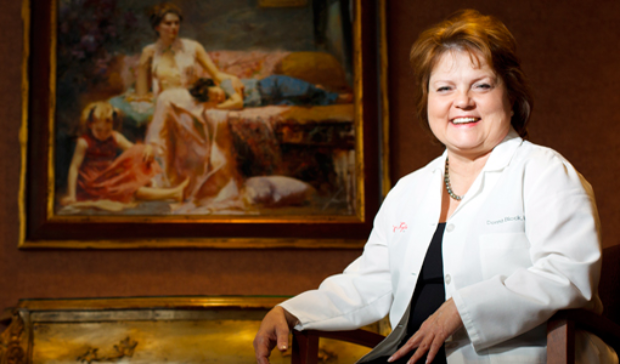In 2001, the Institute of Medicine published Crossing the Quality Chasm, a seminal work identifying the chasm between what is known about providing high-quality health care and what actually is being delivered. Ten years later, this chasm still exists and was a key factor leading to the publication of Make It Happen: Effective Execution in Healthcare Leadership, a book published by Health Administration Press, a division of the Foundation of the American College of Healthcare Executives.
As director of the Center for Health and Medical Affairs at the Opus College of Business, I long have been engaged in the health care delivery system throughout the Midwest and the nation. The focus of the center is to “support improvements in the leadership and management of health care systems through research, community outreach and the collaborative development of innovative professional and executive education programs.” Conducting research for and writing this book not only furthered the goals of the center but can, as a member of HAP’s editorial board notes, “advance health care leaders from developing a plan and letting it sit on the shelf to full and robust execution.”
The Challenge
The failure to execute is a common problem in many organizations but more so in health care. Barriers include an incredibly complex system, splintered leadership, strategies that vacillate between financial goals and patient care, and no external pressure strong enough to force change.
Effective execution, however, is the key to high performance for most of America’s successful corporations. Executing strategies effectively and quickly is well-known in the general business world, but it appears not to have crossed the chasm into the health care field. One way to bridge this gulf is to provide more effective education and training to health care leaders nationwide in the area of practical and efficient execution.
In 2009, during the Health Care UST MBA Washington, D.C., seminar, I had the opportunity to meet Dr. Carolyn Clancy, director of the Agency for Healthcare Research and Quality. A primary goal of AHRQ is to improve the processes needed to effectively move major clinical research findings from scientific literature to widespread use by the clinician.
AHRQ agreed to provide funding to the Opus College of Business to develop a new, effective execution curriculum for health care leaders and managers. For more than a year, I consulted with OCB faculty members on best business practices outside of health care and also visited some of the leading health care delivery organizations in the Midwest, including HealthPartners, Essential Health – Duluth, Marshfield Clinic in Marshfield, Wis., and Twin Cities Orthopedics to examine their systems for execution.
What Makes Execution Hard
What are the barriers to effective execution on health care? First, the environment is quite different from the normal, free market business world:
- The key controllers of resources in health care organizations are clinicians who may not have any formal connection to the leadership structure and organizational strategy
- New clinical technologies and approaches are not considered a competitive advantage and are shared openly
- The financing of health care is much more complex than most business activities
These forces are part of the cause of poor execution. Specific behaviors common in health care include:
- Lack of rigorous strategy formulation needed for execution
- No tracking of projects or key metrics
- Poor use of data, analytical tools and key metrics
- Personnel issues – lack of effective leadership, poor organizational culture, unresolved conflicts and poor employee engagement
The Effective Execution Curriculum
The curriculum that was developed for AHRQ fills this gap in the education of health care leaders by teaching effective tools and techniques used by many non-health care organizations. In addition, it also contains some of best execution tools used by leading health care organizations.
The Opus College of Business has offered health care business training for more than 20 years and used this experience as the basis for the creation of this effective execution curriculum. The faculty and staff that participated in this project are instructors in the health care programs within the college: Health Care UST MBA, Physician Leadership College and custom health care leadership training created for large, integrated health care organizations.
The curriculum contains the following content areas:
- Strategy development
- Balanced scorecard
- Data use and analytics
- Business intelligence
- Project management
- Leadership
- Organizational culture
- Employee engagement
This curriculum has a number of unique features. In addition to classroom and online instruction, it contains three realistic business simulations. These are used to test each participant’s skill in using the tools and techniques that are part of the curriculum. These business challenges are online and use leading-edge avatar technology to allow interviews with key individuals in each simulation (try it yourself online).
Participants in the program are initially assessed as to the level of their leadership skills and as to which of the execution behaviors they exhibit in their current work environment. The results of these assessments and simulations are used to create a personalized professional development plan.
During the program, each participant selects and executes a project. This “action learning” is supported by the faculty to reinforce key skills being taught as part of the curriculum. The final on-site program includes one day of hands-on business intelligence training and analysis in a computer lab.
An Example – Effective Execution and Culture
Our research indicated the organizational culture was one of the most significant predictors of effective execution. HealthPartners provided an excellent example of an ambitious effort to improve. This organization has been on a transformation journey since Mary Brainerd ’74 M.B.A. became CEO. Her unusual cultural change strategy involved the use of theater. She told this story to the Institute for Healthcare Improvement in 2009:
“We had been communicating more to staff about the organizational aspirations but heard back that they did not understand it. They understood the words but wanted to know how the organization would be different and how they would know if we were accomplishing the goals.
“We used theater to address these concerns by commissioning a play from Mixed Blood Theatre Company. In the play, 'Fire in the Bones,' there is a ‘before’ and ‘after’ theme about what health care is and what it could be. The staff did pre-work before the play, and after each performance we had an open discussion. It was a way we could create dialogue and a common experience for our more than 9,000 employees.
“This strategy turned out to be a riskier move than I thought! We received a lot of feedback. The good news was that people really felt the ‘after’ scenario connected with the reason they went into health care in the first place. They said things like, ‘This is the kind of work I wanted to do, ‘This is what makes health care exciting’ and, ‘This is what my real motivator always has been.’
“On the other hand, we also heard, ‘We feel like management and the organizational leadership make decisions without understanding the work we are doing’ and, ‘We feel like we don’t have enough involvement in changing the work ourselves.’ We saw opportunities for change not only from a patient perspective but also from staff’s perspective.
“Overall, the play was provocative, so we had real rigorous, emotional discussions afterward, which was not at all easy for us as leadership to hear. But clearly, it was necessary, and we are grateful for the feedback because it will allow us to make sustainable changes.”
HealthPartners monitors and maintains its culture through a number of internal employee communication vehicles, including a weekly newsletter/blog that includes many positive stories and kudos for HealthPartners staff. The organization also conducts an annual employee survey (with an 84 percent response rate) and quarterly “pulse” surveys that solicit a sample of employees. Today, HealthPartners is ranked as one of the highest quality health care organizations in the country.
The Future
We are pleased that we have made a significant contribution to the art and science of execution in the health care field. We have applied to AHRQ for phase-2 funding of the project to test the curriculum rigorously in both integrated health care systems and standalone clinics. And we will be applying what we know now to curriculum changes and new research projects throughout OCB. The effective execution of health care strategies will be a challenge for many years into the future, but it must improve. Hopefully OCB’s contribution will be a part of this journey.
About the Author
Daniel McLaughlin, M.H.A, is the director of the Center for Health and Medical Affairs. From 1992 through 1999, McLaughlin was the director of Health Policy for Hennepin County, and from 1984 to 1992, he served as administrator and CEO of Hennepin County Medical Center. McLaughlin has served as chair of the Metropolitan Health Care Council of Minnesota and most recently as chair of the National Association of PublicHospitals and Health Systems. He served on President Clinton’s task force on Health Care Reform in 1993. He holds degrees in electrical engineering and health care administration from the University of Minnesota.
Read more from B. Magazine





